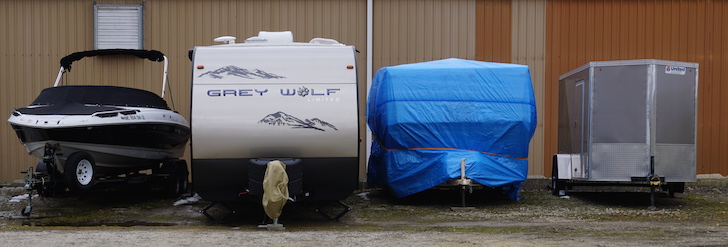You might consider a compromise using a dedicated rv cover and only placing a blue tarp over the top portion of the rv cover to keep water from dripping down from the roof.
Putting a tarp on rv roof.
Unfold the tarp on the roof.
He also mentions that you should never cover your rv completely in a blue tarp because this will restrict airflow.
If you don t have a helper use the metal rings to hold down the tarp at the furthest four corners.
If you have a helper this part is easy.
These ropes may shift and flap in the wind or rub against the rv body causing damage.
There should be an additional 4 feet.
Create an anchor board by rolling the tarp s peak end with a 2 x 4 inch board and nailing the tarp to your board with.
This moisture can leak into the rv or freeze and expand and can cause damage to your vehicle.
Certain rv specific tarps have added features that make them more suited for storing your rv.
While regular blue tarps could be the cheapest option for covering your rv they may not be the best.
Sandwich the tarp by nailing a second 2 x 4 board to.
Try to pick a day that is not windy or else you may face frustration because as soon as you open the tarp up there it will start blowing all over the place.
Partially unroll your tarp to cover the damaged area from the roof s eaves to peak.















































